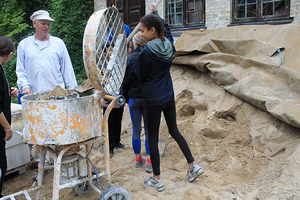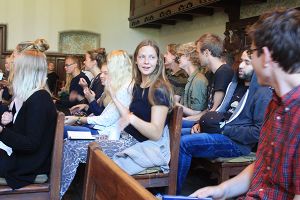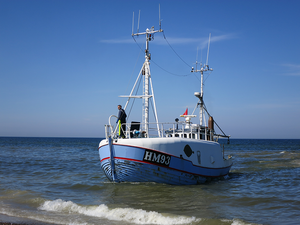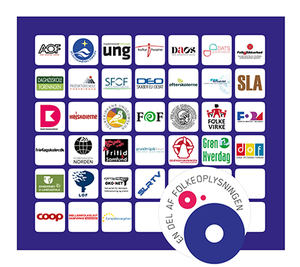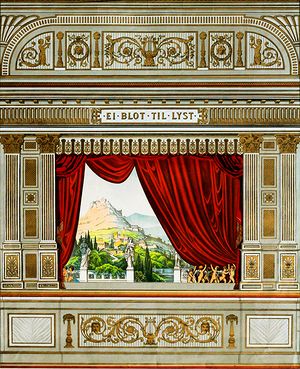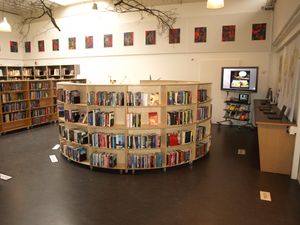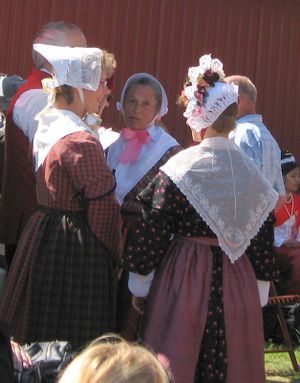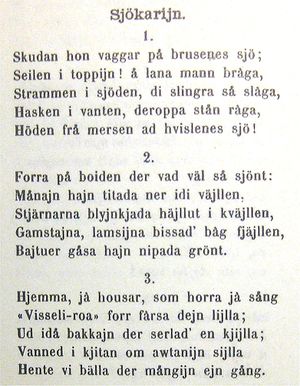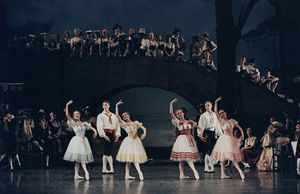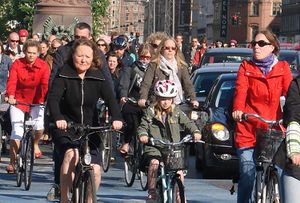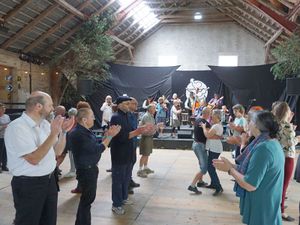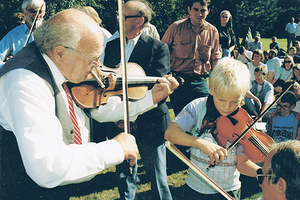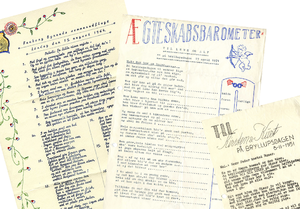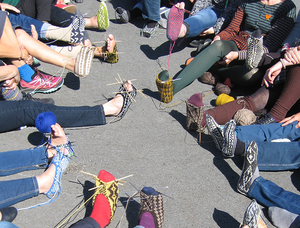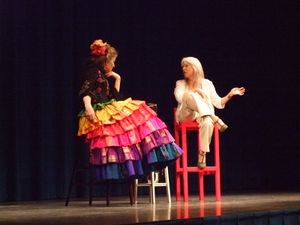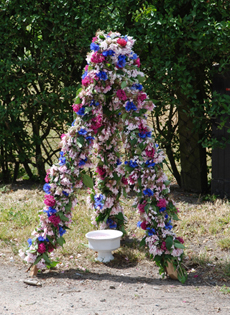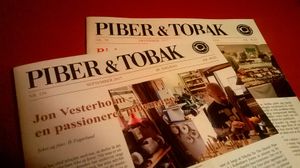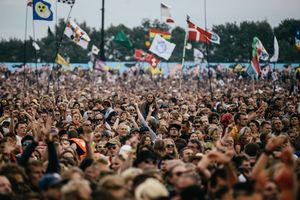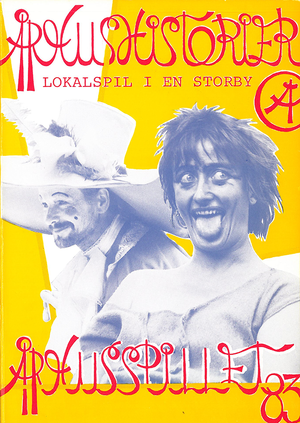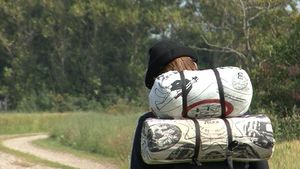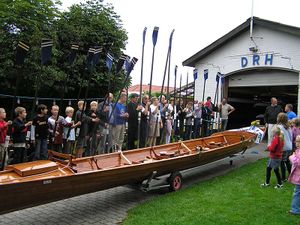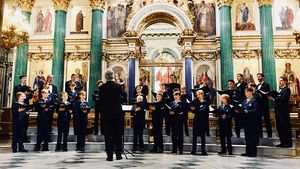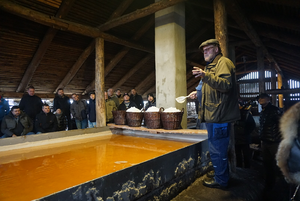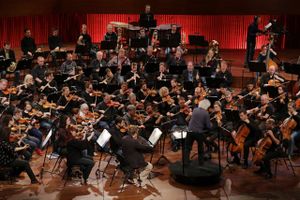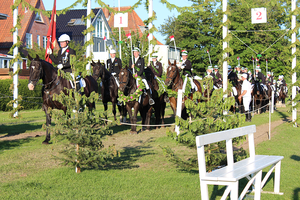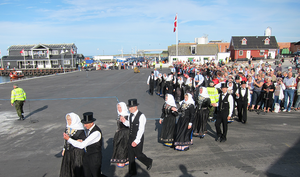English summary: Forskelle mellem versioner
No edit summary |
No edit summary |
||
| Linje 10: | Linje 10: | ||
<h2>Hygge</h2> | <h2>Hygge</h2> | ||
Contribution submitted by Hyggerådet | Contribution submitted by Hyggerådet: | ||
“Hygge is a concept that is deeply integrated and very much a part of the Danish language. It is something we like to share with each other. Hygge is for everybody, young and adult. “ | “Hygge is a concept that is deeply integrated and very much a part of the Danish language. It is something we like to share with each other. Hygge is for everybody, young and adult. “ | ||
| Linje 17: | Linje 18: | ||
[[Fil:Haanvaerk3.png|thumb||left|Photographer: Laura Bekking.]] | [[Fil:Haanvaerk3.png|thumb||left|Photographer: Laura Bekking.]] | ||
<h2>Transmission of traditional craftsmanship to schoolchildren</h2> | <h2>Transmission of traditional craftsmanship to schoolchildren</h2> | ||
Contribution submitted by Old Denmark, Open air Museum – National Museum of Denmark | Contribution submitted by Old Denmark, Open air Museum – National Museum of Denmark: | ||
“Craftsmanship to schoolchildren is a project that seeks to implement an educational model into Craft and Design which is part of schoolchildren’s curriculum. By working with different materials and trying out various types of craftsman techniques and skills, the project aims at giving children insights into an array of different forms of craftsmanship.” | “Craftsmanship to schoolchildren is a project that seeks to implement an educational model into Craft and Design which is part of schoolchildren’s curriculum. By working with different materials and trying out various types of craftsman techniques and skills, the project aims at giving children insights into an array of different forms of craftsmanship.” | ||
| Linje 55: | Linje 56: | ||
[[Fil:Erhvervsfiskeri med klinkbyggede havbåde.png|thumb|Photographer: Kirsten Monrad Hansen, Han Herred Havbåde|left]] | [[Fil:Erhvervsfiskeri med klinkbyggede havbåde.png|thumb|Photographer: Kirsten Monrad Hansen, Han Herred Havbåde|left]] | ||
<h2>The clinker boat</h2> | <h2>The clinker boat</h2> | ||
The contribution is submitted by representives of the Danish Viking Ship Museum, Han Herred Sea Boat Association and the Wooden Ship Association | The contribution is submitted by representives of the Danish Viking Ship Museum, Han Herred Sea Boat Association and the Wooden Ship Association: | ||
"The clinker boat is a particular Nordic boat type, which during the last 2000 years has had great impact on shaping Denmark as a seafarers’ nation. The boat may vary in shape and size, depending on the purpose and use of the boat as well as for whom it was built and the materials available." | "The clinker boat is a particular Nordic boat type, which during the last 2000 years has had great impact on shaping Denmark as a seafarers’ nation. The boat may vary in shape and size, depending on the purpose and use of the boat as well as for whom it was built and the materials available." | ||
| Linje 76: | Linje 77: | ||
[[Fil:Banner.png|thumb||left|]] | [[Fil:Banner.png|thumb||left|]] | ||
<h2>Non-formal adult education</h2> | <h2>Non-formal adult education</h2> | ||
Contribution submitted by Søren Eigaard, Anders Hind, Ove Korsgaard og Agnethe Nordentoft on behalf of The Danish Adult Education Association | Contribution submitted by Søren Eigaard, Anders Hind, Ove Korsgaard og Agnethe Nordentoft on behalf of The Danish Adult Education Association: | ||
“The tradition of managing and attending lifelong learning. The activities targets adults, who participate through choice and chose subject and activity. Non-formal adult education consists of non-profit training programs, debating events and other activities such as evening courses, amateur theatre, choir activities and local radio.“ | “The tradition of managing and attending lifelong learning. The activities targets adults, who participate through choice and chose subject and activity. Non-formal adult education consists of non-profit training programs, debating events and other activities such as evening courses, amateur theatre, choir activities and local radio.“ | ||
| Linje 96: | Linje 97: | ||
[[Fil:Dukketeater.jpg|thumb||left|Photographer: Sven-Erik Olsen.]] | [[Fil:Dukketeater.jpg|thumb||left|Photographer: Sven-Erik Olsen.]] | ||
<h2>The marionette theatre in Denmark – art on small stages</h2> | <h2>The marionette theatre in Denmark – art on small stages</h2> | ||
Contribution submitted by Sven-Erik Olsen (European Paper Theatre) | Contribution submitted by Sven-Erik Olsen (European Paper Theatre): | ||
“Around 1880 the marionette theatre emerged in Denmark; inspired by new printing techniques and an emerging popular interest in theatre. A that time, the marionette theatre was already widespread in most European countries, but thanks to the skilled lithographer Alfred Jakobsen, Denmark quickly asserted itself in Europe.” | “Around 1880 the marionette theatre emerged in Denmark; inspired by new printing techniques and an emerging popular interest in theatre. A that time, the marionette theatre was already widespread in most European countries, but thanks to the skilled lithographer Alfred Jakobsen, Denmark quickly asserted itself in Europe.” | ||
| Linje 121: | Linje 122: | ||
[[Fil:Miljoe.jpg|thumb||left|Photographer: Unknown.]] | [[Fil:Miljoe.jpg|thumb||left|Photographer: Unknown.]] | ||
<h2>Danish School Libraries</h2> | <h2>Danish School Libraries</h2> | ||
The contribution is submitted by Kommunernes Forening for Pædagogiske Læringscentre | The contribution is submitted by Kommunernes Forening for Pædagogiske Læringscentre: | ||
“In an educational and in a world perspective, the Danish School Libraries are unique. Danish school libraries are rooted in a long cultural tradition of disseminating good children’s literature. The school library is a portal to the wonderful realm of fiction and to the unique knowledge of non-fiction. School libraries enable access to knowledge, experiences, education and access to the World.” | “In an educational and in a world perspective, the Danish School Libraries are unique. Danish school libraries are rooted in a long cultural tradition of disseminating good children’s literature. The school library is a portal to the wonderful realm of fiction and to the unique knowledge of non-fiction. School libraries enable access to knowledge, experiences, education and access to the World.” | ||
| Linje 138: | Linje 139: | ||
[[Fil:Folkedragter bornholmske 2017 fotograf Annemarie Aagaard2.JPG|thumb||left|Photographer: Annemarie Aagaard]] | [[Fil:Folkedragter bornholmske 2017 fotograf Annemarie Aagaard2.JPG|thumb||left|Photographer: Annemarie Aagaard]] | ||
<h2>Making historical costumes on Bornholm</h2> | <h2>Making historical costumes on Bornholm</h2> | ||
The contribution is submitted by Lene Steenbuch | The contribution is submitted by Lene Steenbuch: | ||
“At the Medieval Center on Bornholm and among groups of folk dancers, people create 19th Century costumes from Bornholm and costumes from medieval times.” | “At the Medieval Center on Bornholm and among groups of folk dancers, people create 19th Century costumes from Bornholm and costumes from medieval times.” | ||
| Linje 174: | Linje 175: | ||
[[Fil:Sjøkar.jpg|thumb||left|"National anthem" of Bornholm: Sjøkarijn from 1835.]] | [[Fil:Sjøkar.jpg|thumb||left|"National anthem" of Bornholm: Sjøkarijn from 1835.]] | ||
<h2>Bornholm language</h2> | <h2>Bornholm language</h2> | ||
Contribution submitted by Kim Tørnstrøm , Lillian Hjorth Westh and Ivar Lærkesen | Contribution submitted by Kim Tørnstrøm , Lillian Hjorth Westh and Ivar Lærkesen: | ||
"After losing Scania in 1658, the Bornholm language is the only existing example of an Eastern Danish dialect in Denmark, except for a few trends in Dragør and Skovshoved. A fact that leaves people on Bornholm with a sense of linguistic isolation but also sets Bornholm language as a significant identity marker." | "After losing Scania in 1658, the Bornholm language is the only existing example of an Eastern Danish dialect in Denmark, except for a few trends in Dragør and Skovshoved. A fact that leaves people on Bornholm with a sense of linguistic isolation but also sets Bornholm language as a significant identity marker." | ||
| Linje 205: | Linje 206: | ||
[[Fil:Napoli til web.jpg|thumb|Photographer: Martin Mydtskov Rønne / Royal Danish Theatre Archives.|left]] | [[Fil:Napoli til web.jpg|thumb|Photographer: Martin Mydtskov Rønne / Royal Danish Theatre Archives.|left]] | ||
<h2>The Bournonville ballet tradition</h2> | <h2>The Bournonville ballet tradition</h2> | ||
Contribution submitted by representatives of Royal Danish Theatre | Contribution submitted by representatives of Royal Danish Theatre: | ||
"The ballet school of the ballet master August Bournonville has been passed on from generation to generation for almost two centuries. The steps and the repertoire represent a particular way of dancing, particular aesthetics and mimic gestures." | "The ballet school of the ballet master August Bournonville has been passed on from generation to generation for almost two centuries. The steps and the repertoire represent a particular way of dancing, particular aesthetics and mimic gestures." | ||
| Linje 223: | Linje 224: | ||
[[Fil:Billede til cyklisme som levende kultur rev 2.jpg|thumb|Photographer: Unknown|left]] | [[Fil:Billede til cyklisme som levende kultur rev 2.jpg|thumb|Photographer: Unknown|left]] | ||
<h2>Cycling</h2> | <h2>Cycling</h2> | ||
The contribution is submitted by Danish Cyclists' Federation | The contribution is submitted by Danish Cyclists' Federation: | ||
"Denmark is one of the countries in the world where most people bike around. Today most Danes learn to ride a bike before the age of 10 and about 50% of all Danes ride a bike several times a week. To many the bike is much more than just a means of transportation." | "Denmark is one of the countries in the world where most people bike around. Today most Danes learn to ride a bike before the age of 10 and about 50% of all Danes ride a bike several times a week. To many the bike is much more than just a means of transportation." | ||
| Linje 242: | Linje 243: | ||
[[Fil:FolkedansBillede3.jpg|thumb|Photographer: Poul Møller|left]] | [[Fil:FolkedansBillede3.jpg|thumb|Photographer: Poul Møller|left]] | ||
<h2>Danish Folk dance</h2> | <h2>Danish Folk dance</h2> | ||
Contribution submitted by Hanne Troen | Contribution submitted by Hanne Troen: | ||
“Danish folk dance is rooted in the dance culture of Western Europe as it existed all over Europe from around 1750 to 1850. Through adaptions to locale conditions, a Danish folk dance culture exists today in its own manner with a particular sound and way of dancing.“ | “Danish folk dance is rooted in the dance culture of Western Europe as it existed all over Europe from around 1750 to 1850. Through adaptions to locale conditions, a Danish folk dance culture exists today in its own manner with a particular sound and way of dancing.“ | ||
| Linje 260: | Linje 261: | ||
[[Fil:Folkemusik1.png|thumb|left|Photographer: Søren Lond]] | [[Fil:Folkemusik1.png|thumb|left|Photographer: Søren Lond]] | ||
<h2>Danish folk music</h2> | <h2>Danish folk music</h2> | ||
Contribution submitted by president of The National Folk Musicians, Poul Bjerager and folk musicians Jesper Vinther and Henrik Jansberg | Contribution submitted by president of The National Folk Musicians, Poul Bjerager and folk musicians Jesper Vinther and Henrik Jansberg: | ||
"Danish folk music traditions are part of the intangible cultural heritage in Denmark. | "Danish folk music traditions are part of the intangible cultural heritage in Denmark. | ||
| Linje 290: | Linje 291: | ||
[[Fil:Collage.png|thumb|Danish Folklore Archives|left]] | [[Fil:Collage.png|thumb|Danish Folklore Archives|left]] | ||
<h2>Occasional song</h2> | <h2>Occasional song</h2> | ||
The contribution is submitted by film producer and author Ebbe Preisler | The contribution is submitted by film producer and author Ebbe Preisler: | ||
"The typical occasional song is a sing-along written for a specific event and is based on a well-known tune. In Denmark, the phenomenon dates back to the 17th Century. The genre also contains examples of songs written for a specific event on a newly composed tune and sung by a choir or a single person." | "The typical occasional song is a sing-along written for a specific event and is based on a well-known tune. In Denmark, the phenomenon dates back to the 17th Century. The genre also contains examples of songs written for a specific event on a newly composed tune and sung by a choir or a single person." | ||
| Linje 308: | Linje 309: | ||
[[Fil:Strik 1.png|thumb|Photographer: Agnete Rasmussen, Gavstrik|left]] | [[Fil:Strik 1.png|thumb|Photographer: Agnete Rasmussen, Gavstrik|left]] | ||
<h2>Knitting</h2> | <h2>Knitting</h2> | ||
The contribution is submitted by Agnete Rasmussen, a representative of the knitting association, Gavstrik | The contribution is submitted by Agnete Rasmussen, a representative of the knitting association, Gavstrik: | ||
"People have always knitted and will probably continue to do so. However, if the tradition is to maintain its popularity, the craft needs safeguarding through visibility and educational efforts." | "People have always knitted and will probably continue to do so. However, if the tradition is to maintain its popularity, the craft needs safeguarding through visibility and educational efforts." | ||
| Linje 326: | Linje 327: | ||
[[Fil:Anne Marie & Vigga.JPG|thumb|Photographer: Unknown|left]] | [[Fil:Anne Marie & Vigga.JPG|thumb|Photographer: Unknown|left]] | ||
<h2>Story telling</h2> | <h2>Story telling</h2> | ||
The contribution is submitted by storytellers Vigga Bro and Lise Marie Nedergaard | The contribution is submitted by storytellers Vigga Bro and Lise Marie Nedergaard: | ||
"The theatre, the novel and the folk song are rooted in the art of telling stories. From the outset of a basic storyline the storyteller creates the story through improvisation and engagement with the audience. Both professionals and amateurs tell stories." | "The theatre, the novel and the folk song are rooted in the art of telling stories. From the outset of a basic storyline the storyteller creates the story through improvisation and engagement with the audience. Both professionals and amateurs tell stories." | ||
| Linje 345: | Linje 346: | ||
[[Fil:Kilde 1574.png|thumb|Photographer: Byforeningen Svanekes Venner|left]] | [[Fil:Kilde 1574.png|thumb|Photographer: Byforeningen Svanekes Venner|left]] | ||
<h2>Kildefesten in Svaneke</h2> | <h2>Kildefesten in Svaneke</h2> | ||
Contribution submitted by Eigil Viggo Jensen, member of the Kildefest Committee | Contribution submitted by Eigil Viggo Jensen, member of the Kildefest Committee: | ||
"The celebration stems from a heathen ritual of bringing the sick and the weak to the holy spring to let them drink of the health-giving spring during Midsummer. An event still celebrated in Svaneke on Bornholm." | "The celebration stems from a heathen ritual of bringing the sick and the weak to the holy spring to let them drink of the health-giving spring during Midsummer. An event still celebrated in Svaneke on Bornholm." | ||
| Linje 370: | Linje 371: | ||
[[Fil:Piber og Tobak.jpg|thumb|Photographer: Michael C.G. Iversen|left]] | [[Fil:Piber og Tobak.jpg|thumb|Photographer: Michael C.G. Iversen|left]] | ||
<h2>Pipe smoking</h2> | <h2>Pipe smoking</h2> | ||
The contribution is submitted by Nordic Smoker's Guild | The contribution is submitted by Nordic Smoker's Guild: | ||
"Pipe smoking has been a living tradition in Denmark since the 17th Century. Internationally, Danish pipe makers are recognized for their skills." | "Pipe smoking has been a living tradition in Denmark since the 17th Century. Internationally, Danish pipe makers are recognized for their skills." | ||
| Linje 388: | Linje 389: | ||
[[Fil:Tobias nicolai 05072014 publikum musik stemning koncert.jpg-9-800px.jpg|thumb|Photographer: Tobias Nicolai|left]] | [[Fil:Tobias nicolai 05072014 publikum musik stemning koncert.jpg-9-800px.jpg|thumb|Photographer: Tobias Nicolai|left]] | ||
<h2>Roskilde Festival</h2> | <h2>Roskilde Festival</h2> | ||
The contribution is submitted by the Roskilde Festival Group | The contribution is submitted by the Roskilde Festival Group: | ||
"Roskilde Festival is the biggest music festival in Northern Europe and one of the oldest still existing festivals in the world." | "Roskilde Festival is the biggest music festival in Northern Europe and one of the oldest still existing festivals in the world." | ||
| Linje 406: | Linje 407: | ||
[[Fil:Egnsspil1.png|thumb|left|Book cover: ÅrhusSpillet 1983.]] | [[Fil:Egnsspil1.png|thumb|left|Book cover: ÅrhusSpillet 1983.]] | ||
<h2>Community Plays</h2> | <h2>Community Plays</h2> | ||
Contribution submitted by John Andreasen | Contribution submitted by John Andreasen: | ||
"Between 1970 and 2017, about 700 community plays were put on production in Denmark. The number of participants – behind and on stage – can vary from 10 to over a 100 people. Most plays are based on historical events and are typically arranged by non-professional actors supported by friends, family and the local community.” | "Between 1970 and 2017, about 700 community plays were put on production in Denmark. The number of participants – behind and on stage – can vary from 10 to over a 100 people. Most plays are based on historical events and are typically arranged by non-professional actors supported by friends, family and the local community.” | ||
| Linje 456: | Linje 457: | ||
[[Fil:Bootstaufe 1.jpg|thumb|left|©bdn/harrohallmann]] | [[Fil:Bootstaufe 1.jpg|thumb|left|©bdn/harrohallmann]] | ||
<h2>The coexistence of minority and majority by the Danish-German border</h2> | <h2>The coexistence of minority and majority by the Danish-German border</h2> | ||
contribution submitted by Bund Deutscher Nordschleswiger and Sydslesvigsk Forening | contribution submitted by Bund Deutscher Nordschleswiger and Sydslesvigsk Forening: | ||
“In the Danish-German border region minority and majority live in peaceful coexistence. Following decades of conflict, a fruitful coexistence and collaboration have developed during the past decades. Today, the presence and activities of the minorities are regarded as adding value to the region." | “In the Danish-German border region minority and majority live in peaceful coexistence. Following decades of conflict, a fruitful coexistence and collaboration have developed during the past decades. Today, the presence and activities of the minorities are regarded as adding value to the region." | ||
| Linje 473: | Linje 474: | ||
[[Fil:2. Isak-Katedralen St. Petersborg.jpg|thumb|left|Photographer: Per Rene Kristensen]] | [[Fil:2. Isak-Katedralen St. Petersborg.jpg|thumb|left|Photographer: Per Rene Kristensen]] | ||
<h2>The classical European chapel choirs</h2> | <h2>The classical European chapel choirs</h2> | ||
Contribution submitted by The Copenhagen Royal Chapel Choir by Ebbe Munk | Contribution submitted by The Copenhagen Royal Chapel Choir by Ebbe Munk: | ||
“The classical European chapel choirs, the associated choir schools and their connection to their cities represent a unique cultural heritage and constitute the foundation of the European choir tradition and the development of classical music. For over 800 years, this world of sound and tradition has influenced the international music scene.” | “The classical European chapel choirs, the associated choir schools and their connection to their cities represent a unique cultural heritage and constitute the foundation of the European choir tradition and the development of classical music. For over 800 years, this world of sound and tradition has influenced the international music scene.” | ||
| Linje 495: | Linje 496: | ||
[[Fil:Sydepoul.png|thumb|left|Photographer: Maria Louise Sargent]] | [[Fil:Sydepoul.png|thumb|left|Photographer: Maria Louise Sargent]] | ||
<h2>Salt seething on Læsø</h2> | <h2>Salt seething on Læsø</h2> | ||
Contribution submitted by Poul Christensen | Contribution submitted by Poul Christensen: | ||
"Since 1991, Læsø Salt Seething has resumed the tradition of seething salt on the beach meadows facing south in a reconstructed medieval environment. Like in the Middle Ages, the salt production relies on a unique commodity: the highly salty groundwater. They use local wood in the process of heating and evaporation. They produce salt year round and accommodate between 70.00 and 75.000 visitor during the year. The visitors get to see the production and learn about the cultural history." | "Since 1991, Læsø Salt Seething has resumed the tradition of seething salt on the beach meadows facing south in a reconstructed medieval environment. Like in the Middle Ages, the salt production relies on a unique commodity: the highly salty groundwater. They use local wood in the process of heating and evaporation. They produce salt year round and accommodate between 70.00 and 75.000 visitor during the year. The visitors get to see the production and learn about the cultural history." | ||
| Linje 513: | Linje 514: | ||
[[Fil:Det Kongelige Kapel dirigeret af Simon Rattle i Koncerthuset. foto Søren Kaas-Claesson.jpg|thumb|left|Photographer: Søren Kaas-Claesson.]] | [[Fil:Det Kongelige Kapel dirigeret af Simon Rattle i Koncerthuset. foto Søren Kaas-Claesson.jpg|thumb|left|Photographer: Søren Kaas-Claesson.]] | ||
<h2>The musical theatre tradition represented by The Royal Danish Orchestra</h2> | <h2>The musical theatre tradition represented by The Royal Danish Orchestra</h2> | ||
Contribution submitted by representatives of the Royal Danish Theatre | Contribution submitted by representatives of the Royal Danish Theatre: | ||
“The Royal Danish Orchestra dating back to 1448, served King Christian I as the Royal Court Trumpet Corps. The first 401 years the Orchestra was the King’s property and a prestigious cultural project. After the Constitution of 1849, the Orchestra was handed over to the State. All orchestra members have a unique number.” | “The Royal Danish Orchestra dating back to 1448, served King Christian I as the Royal Court Trumpet Corps. The first 401 years the Orchestra was the King’s property and a prestigious cultural project. After the Constitution of 1849, the Orchestra was handed over to the State. All orchestra members have a unique number.” | ||
| Linje 532: | Linje 533: | ||
[[Fil:IMG 0454.png|thumb|left|Photographer: Anette Jessen]] | [[Fil:IMG 0454.png|thumb|left|Photographer: Anette Jessen]] | ||
<h2>Tilting</h2> | <h2>Tilting</h2> | ||
Contribution submitted by Sønderjyllands Ringriderprogram | Contribution submitted by Sønderjyllands Ringriderprogram: | ||
"The National sport of Southern Jutland. A sport for all ages, professions and gender. The sport takes place across the region in different towns." | "The National sport of Southern Jutland. A sport for all ages, professions and gender. The sport takes place across the region in different towns." | ||
| Linje 549: | Linje 550: | ||
[[Fil:Indvielse Fyr 2014.png|thumb|left|Photograph: Bovbjerg Fyr]] | [[Fil:Indvielse Fyr 2014.png|thumb|left|Photograph: Bovbjerg Fyr]] | ||
<h2>Life by Bovbjerg Lighthouse</h2> | <h2>Life by Bovbjerg Lighthouse</h2> | ||
Contribution submitted by Hans Kolind-Andersen | Contribution submitted by Hans Kolind-Andersen: | ||
"The Bovbjerg Lighthouse is cultural center for people who are interested in culture, nature, art, theatre, music, science, history and literature. A committed group of volunteers runs many of the activities and takes part in the everyday management of the lighthouse. The lighthouse is a popular recreational area for tourists and the local population." | "The Bovbjerg Lighthouse is cultural center for people who are interested in culture, nature, art, theatre, music, science, history and literature. A committed group of volunteers runs many of the activities and takes part in the everyday management of the lighthouse. The lighthouse is a popular recreational area for tourists and the local population." | ||
| Linje 580: | Linje 581: | ||
[[Fil:Dragt1.png|thumb|left|Photographer: Unknown.]] | [[Fil:Dragt1.png|thumb|left|Photographer: Unknown.]] | ||
<h2>The traditional costume of Læsø</h2> | <h2>The traditional costume of Læsø</h2> | ||
Contribution submitted by Kirsten Larsen and Preben Mikkelsen | Contribution submitted by Kirsten Larsen and Preben Mikkelsen: | ||
“As seafarers, the men at Læsø brought home silk, damask and other exotic textiles from countries far away. Silver was imported from the Netherlands. The costume was designed to imitate the clothing of the bourgeoisie in the larger cities. The design of the costume has not changed since 1850.” | “As seafarers, the men at Læsø brought home silk, damask and other exotic textiles from countries far away. Silver was imported from the Netherlands. The costume was designed to imitate the clothing of the bourgeoisie in the larger cities. The design of the costume has not changed since 1850.” | ||
| Linje 594: | Linje 595: | ||
<h2>Excursions on Læsø</h2> | <h2>Excursions on Læsø</h2> | ||
Contribution submitted by Poul Christensen | Contribution submitted by Poul Christensen: | ||
“Nowadays when people on Læsø go for a walk in nature, they never return empty handed. It is an old tradition, that you bring back home what nature so kindly gives. Back in the old days, the custom stemmed from necessity; today mainly exercised as it brings joy.” | “Nowadays when people on Læsø go for a walk in nature, they never return empty handed. It is an old tradition, that you bring back home what nature so kindly gives. Back in the old days, the custom stemmed from necessity; today mainly exercised as it brings joy.” | ||
| Linje 601: | Linje 602: | ||
<h2>Medical gardens</h2> | <h2>Medical gardens</h2> | ||
Contribution submitted by The Medical Gardens in Tranekær | Contribution submitted by The Medical Gardens in Tranekær: | ||
“Centre for the collecting of knowledge on medical plants and their use in traditional medicine and in modern medicine. The gardens contain 600 different sorts of medical plants including trees. The centre preserves living cultural heritage of Langeland i.e. sorts of apple trees, roses and poppies from Langeland." | “Centre for the collecting of knowledge on medical plants and their use in traditional medicine and in modern medicine. The gardens contain 600 different sorts of medical plants including trees. The centre preserves living cultural heritage of Langeland i.e. sorts of apple trees, roses and poppies from Langeland." | ||
| Linje 608: | Linje 609: | ||
<h2>The Easter eggs from the Easter Bunny</h2> | <h2>The Easter eggs from the Easter Bunny</h2> | ||
Contribution submitted by Helle Lund Ravn | Contribution submitted by Helle Lund Ravn: | ||
"Easter morning the Easter Bunny leaves eggs for the children to find." | "Easter morning the Easter Bunny leaves eggs for the children to find." | ||
| Linje 615: | Linje 616: | ||
<h2>May Tree celebration</h2> | <h2>May Tree celebration</h2> | ||
Contribution submitted by Strynø Majtræsforening | Contribution submitted by Strynø Majtræsforening: | ||
"Every year on Strynø, an island in the archipelago of Funen, people come together for the May Tree celebration. Men hoist the May Tree, women decorate the garlands for the tree and children bring forth the flag to celebrate the coming of summer." | "Every year on Strynø, an island in the archipelago of Funen, people come together for the May Tree celebration. Men hoist the May Tree, women decorate the garlands for the tree and children bring forth the flag to celebrate the coming of summer." | ||
| Linje 621: | Linje 622: | ||
<h2>The Danish treasuries of children’s songs</h2> | <h2>The Danish treasuries of children’s songs</h2> | ||
Contribution submitted by Aarhus Music School | Contribution submitted by Aarhus Music School: | ||
“The tradition of singing to and with children exists in most cultures. People pass on traditional songs and singing games and make up their own songs to comfort the child and to help it fall asleep.” | “The tradition of singing to and with children exists in most cultures. People pass on traditional songs and singing games and make up their own songs to comfort the child and to help it fall asleep.” | ||
Versionen fra 14. nov. 2018, 10:19
Living culture – an inventory of intangible cultural heritage in Denmark
The inventory is part of the work with UNESCO's Convention for the Safeguarding of the Intangible Cultural Heritage. The countries that have joined the convention create one or more inventories of living, intangible cultural heritage in their own country.
According to the convention, the inventory is a tool to identify, describe and disseminate knowledge about different examples of intangible cultural heritage. The inventory is a living document with examples of intangible cultural heritage submitted by the communities of practitioners themselves. Every third year contributors are encouraged to update their contribution.
If you wish to submit an example of intangible cultural heritage in another language than Danish, please contact The Danish Folklore Archives at The Royal Danish Library.
Communities applying for the international lists must first be able to show that the proposed element is included in a national inventory.
Hygge
Contribution submitted by Hyggerådet:
“Hygge is a concept that is deeply integrated and very much a part of the Danish language. It is something we like to share with each other. Hygge is for everybody, young and adult. “
Transmission of traditional craftsmanship to schoolchildren
Contribution submitted by Old Denmark, Open air Museum – National Museum of Denmark:
“Craftsmanship to schoolchildren is a project that seeks to implement an educational model into Craft and Design which is part of schoolchildren’s curriculum. By working with different materials and trying out various types of craftsman techniques and skills, the project aims at giving children insights into an array of different forms of craftsmanship.”
The Danish Folk High School
Contribution submitted by Højskolehistorisk Forening: “The values of the Folk High School are disseminated through the language and the stories, through talks and songs, and through the homely atmosphere of living in a boarding school. It is an intangible cultural heritage which impacts many people’s view on life and their everyday culture.”
The clinker boat
The contribution is submitted by representives of the Danish Viking Ship Museum, Han Herred Sea Boat Association and the Wooden Ship Association:
"The clinker boat is a particular Nordic boat type, which during the last 2000 years has had great impact on shaping Denmark as a seafarers’ nation. The boat may vary in shape and size, depending on the purpose and use of the boat as well as for whom it was built and the materials available."
Non-formal adult education
Contribution submitted by Søren Eigaard, Anders Hind, Ove Korsgaard og Agnethe Nordentoft on behalf of The Danish Adult Education Association:
“The tradition of managing and attending lifelong learning. The activities targets adults, who participate through choice and chose subject and activity. Non-formal adult education consists of non-profit training programs, debating events and other activities such as evening courses, amateur theatre, choir activities and local radio.“
The marionette theatre in Denmark – art on small stages
Contribution submitted by Sven-Erik Olsen (European Paper Theatre):
“Around 1880 the marionette theatre emerged in Denmark; inspired by new printing techniques and an emerging popular interest in theatre. A that time, the marionette theatre was already widespread in most European countries, but thanks to the skilled lithographer Alfred Jakobsen, Denmark quickly asserted itself in Europe.”
Danish School Libraries
The contribution is submitted by Kommunernes Forening for Pædagogiske Læringscentre:
“In an educational and in a world perspective, the Danish School Libraries are unique. Danish school libraries are rooted in a long cultural tradition of disseminating good children’s literature. The school library is a portal to the wonderful realm of fiction and to the unique knowledge of non-fiction. School libraries enable access to knowledge, experiences, education and access to the World.”
Making historical costumes on Bornholm
The contribution is submitted by Lene Steenbuch:
“At the Medieval Center on Bornholm and among groups of folk dancers, people create 19th Century costumes from Bornholm and costumes from medieval times.”
Bornholm language
Contribution submitted by Kim Tørnstrøm , Lillian Hjorth Westh and Ivar Lærkesen:
"After losing Scania in 1658, the Bornholm language is the only existing example of an Eastern Danish dialect in Denmark, except for a few trends in Dragør and Skovshoved. A fact that leaves people on Bornholm with a sense of linguistic isolation but also sets Bornholm language as a significant identity marker."
The Bournonville ballet tradition
Contribution submitted by representatives of Royal Danish Theatre:
"The ballet school of the ballet master August Bournonville has been passed on from generation to generation for almost two centuries. The steps and the repertoire represent a particular way of dancing, particular aesthetics and mimic gestures."
Cycling
The contribution is submitted by Danish Cyclists' Federation:
"Denmark is one of the countries in the world where most people bike around. Today most Danes learn to ride a bike before the age of 10 and about 50% of all Danes ride a bike several times a week. To many the bike is much more than just a means of transportation."
Danish Folk dance
Contribution submitted by Hanne Troen:
“Danish folk dance is rooted in the dance culture of Western Europe as it existed all over Europe from around 1750 to 1850. Through adaptions to locale conditions, a Danish folk dance culture exists today in its own manner with a particular sound and way of dancing.“
Danish folk music
Contribution submitted by president of The National Folk Musicians, Poul Bjerager and folk musicians Jesper Vinther and Henrik Jansberg:
"Danish folk music traditions are part of the intangible cultural heritage in Denmark. The traditions encompass a variety of music, dances and songs that encapsulate several hundred years of repertoires and expressions including those of today."
Occasional song
The contribution is submitted by film producer and author Ebbe Preisler:
"The typical occasional song is a sing-along written for a specific event and is based on a well-known tune. In Denmark, the phenomenon dates back to the 17th Century. The genre also contains examples of songs written for a specific event on a newly composed tune and sung by a choir or a single person."
Knitting
The contribution is submitted by Agnete Rasmussen, a representative of the knitting association, Gavstrik:
"People have always knitted and will probably continue to do so. However, if the tradition is to maintain its popularity, the craft needs safeguarding through visibility and educational efforts."
Story telling
The contribution is submitted by storytellers Vigga Bro and Lise Marie Nedergaard:
"The theatre, the novel and the folk song are rooted in the art of telling stories. From the outset of a basic storyline the storyteller creates the story through improvisation and engagement with the audience. Both professionals and amateurs tell stories."
Kildefesten in Svaneke
Contribution submitted by Eigil Viggo Jensen, member of the Kildefest Committee: "The celebration stems from a heathen ritual of bringing the sick and the weak to the holy spring to let them drink of the health-giving spring during Midsummer. An event still celebrated in Svaneke on Bornholm."
Pipe smoking
The contribution is submitted by Nordic Smoker's Guild:
"Pipe smoking has been a living tradition in Denmark since the 17th Century. Internationally, Danish pipe makers are recognized for their skills."
Roskilde Festival
The contribution is submitted by the Roskilde Festival Group:
"Roskilde Festival is the biggest music festival in Northern Europe and one of the oldest still existing festivals in the world."
Community Plays
Contribution submitted by John Andreasen: "Between 1970 and 2017, about 700 community plays were put on production in Denmark. The number of participants – behind and on stage – can vary from 10 to over a 100 people. Most plays are based on historical events and are typically arranged by non-professional actors supported by friends, family and the local community.”
Contribution submitted by Suzi Apelgren: “At går på valsen” is to travel and develop as a craftsman through exchange of craft and culture. The tradition is most common in Central Europe. Right now, there are between 400 and 600 travelling craftsmen. Only one of whom is Danish. Within the last two years, two Danish travelling craftsmen have returned home. The returned craftsmen develop a lifelong brotherhood.”
The coexistence of minority and majority by the Danish-German border
contribution submitted by Bund Deutscher Nordschleswiger and Sydslesvigsk Forening: “In the Danish-German border region minority and majority live in peaceful coexistence. Following decades of conflict, a fruitful coexistence and collaboration have developed during the past decades. Today, the presence and activities of the minorities are regarded as adding value to the region."
The classical European chapel choirs
Contribution submitted by The Copenhagen Royal Chapel Choir by Ebbe Munk:
“The classical European chapel choirs, the associated choir schools and their connection to their cities represent a unique cultural heritage and constitute the foundation of the European choir tradition and the development of classical music. For over 800 years, this world of sound and tradition has influenced the international music scene.”
Salt seething on Læsø
Contribution submitted by Poul Christensen:
"Since 1991, Læsø Salt Seething has resumed the tradition of seething salt on the beach meadows facing south in a reconstructed medieval environment. Like in the Middle Ages, the salt production relies on a unique commodity: the highly salty groundwater. They use local wood in the process of heating and evaporation. They produce salt year round and accommodate between 70.00 and 75.000 visitor during the year. The visitors get to see the production and learn about the cultural history."
The musical theatre tradition represented by The Royal Danish Orchestra
Contribution submitted by representatives of the Royal Danish Theatre:
“The Royal Danish Orchestra dating back to 1448, served King Christian I as the Royal Court Trumpet Corps. The first 401 years the Orchestra was the King’s property and a prestigious cultural project. After the Constitution of 1849, the Orchestra was handed over to the State. All orchestra members have a unique number.”
Tilting
Contribution submitted by Sønderjyllands Ringriderprogram:
"The National sport of Southern Jutland. A sport for all ages, professions and gender. The sport takes place across the region in different towns."
Life by Bovbjerg Lighthouse
Contribution submitted by Hans Kolind-Andersen:
"The Bovbjerg Lighthouse is cultural center for people who are interested in culture, nature, art, theatre, music, science, history and literature. A committed group of volunteers runs many of the activities and takes part in the everyday management of the lighthouse. The lighthouse is a popular recreational area for tourists and the local population."
The traditional costume of Læsø
Contribution submitted by Kirsten Larsen and Preben Mikkelsen: “As seafarers, the men at Læsø brought home silk, damask and other exotic textiles from countries far away. Silver was imported from the Netherlands. The costume was designed to imitate the clothing of the bourgeoisie in the larger cities. The design of the costume has not changed since 1850.”
Excursions on Læsø
Contribution submitted by Poul Christensen:
“Nowadays when people on Læsø go for a walk in nature, they never return empty handed. It is an old tradition, that you bring back home what nature so kindly gives. Back in the old days, the custom stemmed from necessity; today mainly exercised as it brings joy.”
Medical gardens
Contribution submitted by The Medical Gardens in Tranekær:
“Centre for the collecting of knowledge on medical plants and their use in traditional medicine and in modern medicine. The gardens contain 600 different sorts of medical plants including trees. The centre preserves living cultural heritage of Langeland i.e. sorts of apple trees, roses and poppies from Langeland."
The Easter eggs from the Easter Bunny
Contribution submitted by Helle Lund Ravn:
"Easter morning the Easter Bunny leaves eggs for the children to find."
May Tree celebration
Contribution submitted by Strynø Majtræsforening:
"Every year on Strynø, an island in the archipelago of Funen, people come together for the May Tree celebration. Men hoist the May Tree, women decorate the garlands for the tree and children bring forth the flag to celebrate the coming of summer."
The Danish treasuries of children’s songs
Contribution submitted by Aarhus Music School:
“The tradition of singing to and with children exists in most cultures. People pass on traditional songs and singing games and make up their own songs to comfort the child and to help it fall asleep.”
